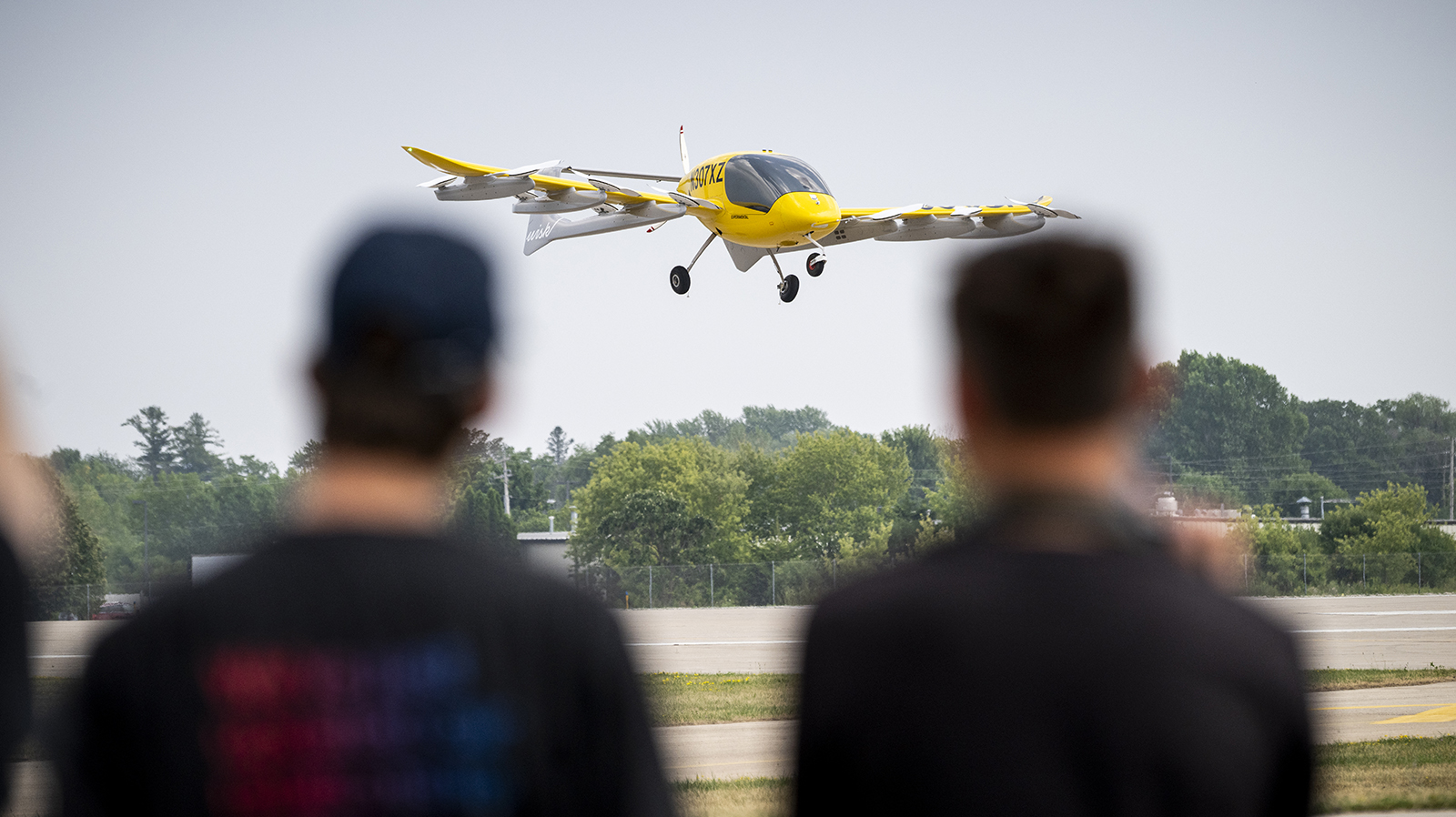Stay Up to Date
Submit your email address to receive the latest industry and Aerospace America news.
The Transformational Flight Integration Committee serves as a focal point for a community of practice engaged in technical, business and societal issues associated with transformational approaches to on-demand air mobility enabled by the convergence of advanced technologies.
With the earliest targets for passenger flights aboard electric air taxis still some time away, developers of these aircraft, regulators and early adopters continued progress toward making advanced air mobility a reality.
In June, Volocopter flew its two-seat VoloCity for the opening flight demonstration of the Paris Air Show. The German company plans to ferry passengers in these electric vertical takeoff and landing aircraft during the 2024 Paris Olympics.
In the U.S., California-based Archer Aviation and Joby Aviation are targeting 2025 for beginning passenger flights. In early 2023, FAA began finalizing the criteria to type certify the Archer and Joby aircraft after receiving public comments on proposed Special Class Airworthiness Criteria in late 2022. Joby and Archer also received increases in their contracts with the U.S. Air Force’s Agility Prime program, which is paying Joby up to $131 million and Archer up to $142 million to each deliver multiple aircraft to Air Force bases. Air Force, FAA and NASA personnel will evaluate their utility for carrying personnel and supplies for both military and civil applications. Joby delivered the first aircraft to Edwards Air Force Base in September.
In March, BETA Technologies of Vermont announced it would develop the CX300, a conventional takeoff and landing variant of its Alia eVTOL. The company is targeting 2025 for FAA type certification of the CX300, followed closely by Alia in 2026.
In May, Boeing announced that autonomous air taxi developer Wisk of California was now a wholly owned subsidiary after Kittyhawk Corp. sold its share of Wisk to Boeing. In July, Wisk conducted a remotely supervised flight of its Cora electric demonstrator at the EAA AirVenture air show in Wisconsin. Archer in August agreed to purchase Wisk’s autonomy technology in the future, one of the terms of the settlement of a multiyear lawsuit in which Wisk alleged theft of trade secrets by Archer.
Also in August, an eVTOL prototype from U.K. eVTOL developer Vertical Aerospace crashed during a remotely piloted test flight. Vertical later determined the cause was a faulty propeller, which the company said it had redesigned for its next VX4 prototype prior to the crash.
In June, FAA released proposed rules for certifying early pilots and permitting commercial operations of powered-lift eVTOLs — those that would cruise on nonrotating wings and use propulsive lift for slow flight, including vertical takeoff and landing. Industry comments on the Special Federal Aviation Rule expressed concern that the proposed regulations were overly conservative. The public comment period closed Aug. 14.
In response to the Advanced Air Mobility Coordination and Leadership Act that Congress passed last year, the U.S. government formed an AAM Interagency Working Group, which in May released a request for information for public comments on developing a “National Strategy for AAM.” The working group, comprising 22 federal departments and agencies, plans to deliver this strategy in 2024.
In the regional air mobility sector, several companies are seeking FAA certification for autonomous systems for small cargo aircraft. In April, Xwing of California submitted to FAA the certification plan for its Superpilot flight control hardware and software, which the company plans to install on Cessna Caravans for remotely piloted operations. In July, Reliable Robotics of California announced that FAA had accepted the certification plan for its system. Also in July, Merlin Labs of Massachusetts announced it had conducted 25 autonomous cargo demonstration flights in Alaska with its Merlin Pilot hardware and software.
In March, California-based Universal Hydrogen conducted the first hydrogen-powered flight of its modified Dash 8 aircraft, in which one of the aircraft’s turboprop engines was replaced by a New York-based Plug Power’s hydrogen fuel cell and Washington-based magniX’s electric motor. Universal Hydrogen plans to sell kits to retrofit regional aircraft to run on hydrogen fuel cells.
Stay Up to Date
Submit your email address to receive the latest industry and Aerospace America news.




